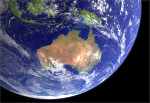The systematioc study and research into shortwave propagation has been a principal field of
interest to me, both at the hobby and professional levels.
My SW hobby interest began in earnest in 1950, after some preliminary work in 1949!.
My first documented SW reception was on February 20, 1954, for the Voice of America, Dixon,
California, using 9515 kHz.
Since then, I have continued to investigate SW propagation into south eastern Australia, and
my area of specialization is the study of daytime transmission modes over long distances on the lower frequency bands.
These include:
- The African Daytime Mode
- The Asian Daytime Mode
I first became aware of the African Daytime Mode on January 10, 1959, with propagation observed of the South African Broadcasting Corporation national
network on 7295 kHz, at 0515 UTC, which was 3.15 pm here in Melbourne.
The Asian Daytime Mode was first "discovered" in the early
1970s, with strong signals present duyring the summer months at local noon in Melbourne, on 4 MHz.
These specialized (also known as "complex" modes) were studied during every year, which formed
the basis of many technical papers.
These were published worldwide in the radio hobby clubs, and in the World Radio TV Handbook,
and in later years on the Internet.
Coincident with my monitoring research, I commenced the submission of reception reports tp SW broadcasters in 1954, for acknowledgement as "Verifications" (also known as "QSLs").
From 1954, until the present, I have obtained nearly 8,500 SW QSLs from 230 "Radio countries",
oiginating from nearly 1,100 ifferent "stations".
This is an unchallenged world record, using classification standards produced by the Australian Radio DX Club in 1967.
In recent years, my rseerach has been supported by daytime field monitoring excursions
to locations in the nearer hills and coastal regions surroounding Melbourne.
Dayime Propagation studied from suburban Melbiurne has become frustrating in recent years,
due to the effects of powerline RF radiation, electronic interference from domestic appliances, RF radiation from cable TV
and data services, tramlines, railways, and traffic control signals, and atmospheric and ionospheric degeneration.
I found that the secret to improved reception was to go to field monitoring locations, where
powerline radiation was relatively small, or non-existent, using battery-operated sensitive communications receivers, coupled
to a small non-directional antenna, The resukts have been remarkable!
The locations I found to be best included the Warrandyte State Park, the Dandenong Ranges
National Park, the Mornington Peninsula National Park, the Mt Worth State Park, the You Yangs Regional Park, and
the Yarra Ranges National Park,
Coastal areas were also found to be excellent, including many locations around Westernport
Bay.
To the west, a good relatively noise-free location was the Point Cook Marine Park.
In fact, most State, and National Parks offered good opportuntiies for specialized research..

